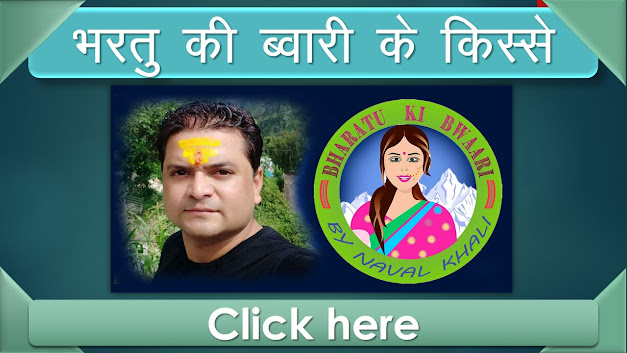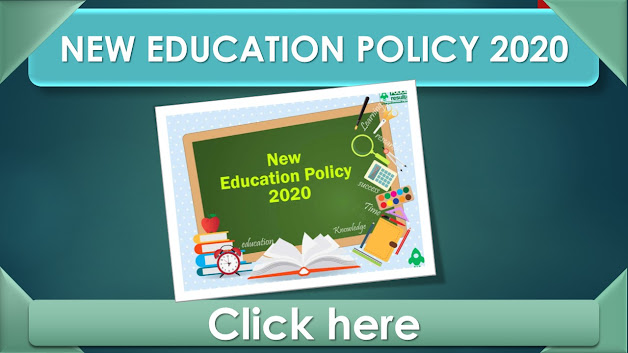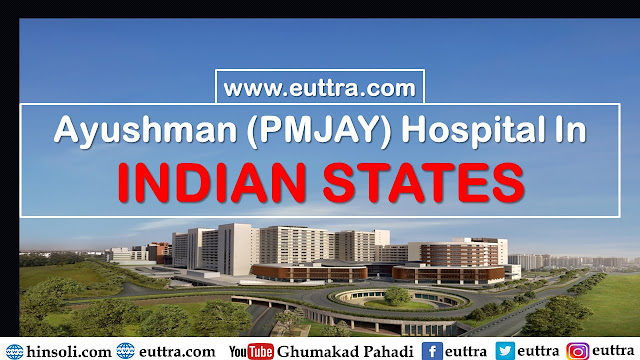24. Online and Digital Education: Ensuring Equitable Use of Technology
24.1. New circumstances and realities require new initiatives. The recent rise in epidemics and pandemics necessitates that we are ready with alternative modes of quality education whenever and wherever traditional and in-person modes of education are not possible. In this regard, the National Education Policy 2020 recognizes the importance of leveraging the advantages of technology while acknowledging its potential risks and dangers. It calls for carefully designed and appropriately scaled pilot studies to determine how the benefits of online/digital education can be reaped while addressing or mitigating the downsides. In the meantime, the existing digital platforms and ongoing ICT-based educational initiatives must be optimized and expanded to meet the current and future challenges in providing quality education for all.
24.2. However, the benefits of online/digital education cannot be leveraged unless the digital divide is eliminated through concerted efforts, such as the Digital India campaign and the availability of affordable computing devices. It is important that the use of technology for online and digital education adequately addresses concerns of equity.
24.3. Teachers require suitable training and development to be effective online educators. It cannot be assumed that a good teacher in a traditional classroom will automatically be a good teacher in an online classroom. Aside from changes required in pedagogy, online assessments also require a different approach. There are numerous challenges to conducting online examinations at scale, including limitations on the types of questions that can be asked in an online environment, handling network and power disruptions, and preventing unethical practices. Certain types of courses/subjects, such as performing arts and science practical have limitations in the online/digital education space, which can be overcome to a partial extent with innovative measures. Further, unless online education is blended with experiential and activity-based learning, it will tend to become a screen-based education with limited focus on the social, affective and psychomotor dimensions of learning.
24.4. Given the emergence of digital technologies and the emerging importance of leveraging technology for teaching-learning at all levels from school to higher education, this Policy recommends the following key initiatives:
(a) Pilot studies for online education: Appropriate agencies, such as the NETF, CIET, NIOS, IGNOU, IITs, NITs, etc. will be identified to conduct a series of pilot studies, in parallel, to evaluate the benefits of integrating education with online education while mitigating the downsides and also to study related areas, such as, student device addiction, most preferred formats of e-content, etc. The results of these pilot studies will be publicly communicated and used for continuous improvement.
(b) Digital infrastructure: There is a need to invest in creation of open, interoperable, evolvable, public digital infrastructure in the education sector that can be used by multiple platforms and point solutions, to solve for India’s scale, diversity, complexity and device penetration. This will ensure that the technology-based solutions do not become outdated with the rapid advances in technology.
(c) Online teaching platform and tools: Appropriate existing e-learning platforms such as SWAYAM, DIKSHA, will be extended to provide teachers with a structured, user-friendly, rich set of assistive tools for monitoring progress of learners. Tools, such as, two-way video and two-way-audio interface for holding online classes are a real necessity as the present pandemic has shown.
(d) Content creation, digital repository, and dissemination: A digital repository of content including creation of coursework, Learning Games & Simulations, Augmented Reality and Virtual Reality will be developed, with a clear public system for ratings by users on effectiveness and quality. For fun based learning student-appropriate tools like apps, gamification of Indian art and culture, in multiple languages, with clear operating instructions, will also be created. A reliable backup mechanism for disseminating e-content to students will be provided.
(e) Addressing the digital divide: Given the fact that there still persists a substantial section of the population whose digital access is highly limited, the existing mass media, such as television, radio, and community radio will be extensively used for telecast and broadcasts. Such educational programmes will be made available 24/7 in different languages to cater to the varying needs of the student population. A special focus on content in all Indian languages will be emphasized and required; digital content will need to reach the teachers and students in their medium of instruction as far as possible.
(f) Virtual Labs: Existing e-learning platforms such as DIKSHA, SWAYAM and SWAYAMPRABHA will also be leveraged for creating virtual labs so that all students have equal access to quality practical and hands-on experiment-based learning experiences. The possibility of providing adequate access to SEDG students and teachers through suitable digital devices, such as tablets with pre-loaded content, will be considered and developed.
(g) Training and incentives for teachers: Teachers will undergo rigorous training in learner-centric pedagogy and on how to become high-quality online content creators themselves using online teaching platforms and tools. There will be emphasis on the teacher’s role in facilitating active student engagement with the content and with each other.
(h) Online assessment and examinations: Appropriate bodies, such as the proposed National Assessment Centre or PARAKH, School Boards, NTA, and other identified bodies will design and implement assessment frameworks encompassing design of competencies, portfolio, rubrics, standardized assessments, and assessment analytics. Studies will be undertaken to pilot new ways of assessment using education technologies focusing on 21st century skills.
(i) Blended models of learning: While promoting digital learning and education, the importance of face-to-face in-person learning is fully recognized. Accordingly, different effective models of blended learning will be identified for appropriate replication for different subjects.
(j) Laying down standards: As research on online/digital education emerges, NETF and other appropriate bodies shall set up standards of content, technology, and pedagogy for online/digital teaching-learning. These standards will help to formulate guidelines for e-learning by States, Boards, schools and school complexes, HEIs, etc.
24.5 Creating a Dedicated Unit for Building of World Class, Digital Infrastructure, Educational Digital Content and Capacity
Technology in education is a journey and not a destination and capacity will be needed to orchestrate the various ecosystem players to implement policy objectives. A dedicated unit for the purpose of
orchestrating the building of digital infrastructure, digital content and capacity building will be created in the Ministry to look after the e-education needs of both school and higher education. Since technology is rapidly evolving, and needs specialists to deliver high quality e-learning, a vibrant ecosystem has to be encouraged to create solutions that not only solve India’s challenges of scale, diversity, equity, but also evolve in keeping with the rapid changes in technology, whose half-life reduces with each passing year. This centre will, therefore, consist of experts drawn from the field of administration, education, educational technology, digital pedagogy and assessment, e-governance, etc.
English Link
- NatNational Education Policy 2020ional
- NEP 2020 ,Part I. SCHOOL EDUCATION
- NEP 2020 ,Part I. Curriculum and Pedagogy in Schools: Learning Should be Holistic, Integrated, Enjoyable, and Engaging
- NEP 2020 ,Part I. Teachers
- NEP 2020 ,Part I, Equitable and Inclusive Education: Learning for All
- NEP 2020 ,Part I, Efficient Resourcing and Effective Governance through School Complexes/Clusters
- NEP 2020 ,Part I, Standard-setting and Accreditation for School Education
- NEP 2020 , Part II, HIGHER EDUCATION
- NEP 2020 , Part II, HIGHER EDUCATION, Institutional Restructuring and Consolidation
- NEP 2020 , Part II, HIGHER EDUCATION, Towards a More Holistic and Multidisciplinary Education
- NEP 2020 , Part II, HIGHER EDUCATION, Optimal Learning Environments and Support for Students
- NEP 2020 , Part II, HIGHER EDUCATION, Motivated, Energized, and Capable Faculty
- NEP 2020 , Part II, HIGHER EDUCATION, Equity and Inclusion in Higher Education
- NEP 2020 , Part II, HIGHER EDUCATION, Teacher Education
- NEP 2020 , Part II, HIGHER EDUCATION, Reimagining Vocational Education
- NEP 2020 , Part II, HIGHER EDUCATION, Catalysing Quality Academic Research in All Fields through a new National Research Foundation
- NEP 2020 , Part II, HIGHER EDUCATION, Transforming the Regulatory System of Higher Education
- NEP 2020 , Part II, HIGHER EDUCATION, Effective Governance and Leadership for Higher Education Institutions
- NEP 2020, Part III, OTHER KEY AREAS OF FOCUS
- NEP 2020, Part III, Adult Education and Lifelong Learning
- NEP 2020, Part III, Promotion of Indian Languages, Arts, and Culture
- NEP 2020, Part III, Technology Use and Integration
- NEP 2020, Part III, Online and Digital Education: Ensuring Equitable Use of Technology
- NEP 2020, Part IV, MAKING IT HAPPEN
हिंदी लिंक
- NatNational Education Policy 2020ional (राष्ट्रीय शिक्षा नीति 2020)
- एनईपी 2020, भाग I। स्कूल शिक्षा
- एनईपी 2020, भाग I। स्कूलों में पाठ्यचर्या और शिक्षाशास्त्र: सीखना समग्र, एकीकृत, आनंददायक और आकर्षक होना चाहिए
- एनईपी 2020, भाग I। शिक्षक
- एनईपी 2020, भाग I, समान और समावेशी शिक्षा: सभी के लिए सीखना
- एनईपी 2020, भाग I, स्कूल परिसरों / समूहों के माध्यम से कुशल संसाधन और प्रभावी शासन
- एनईपी 2020, भाग I, स्कूली शिक्षा के लिए मानक-सेटिंग और प्रत्यायन
- एनईपी 2020, भाग II, उच्च शिक्षा
- एनईपी 2020, भाग II, उच्च शिक्षा, संस्थागत पुनर्गठन और समेकन
- NEP 2020, भाग II, उच्च शिक्षा, एक अधिक समग्र और बहुविषयक शिक्षा की ओर
- एनईपी 2020, भाग II, उच्च शिक्षा, इष्टतम शिक्षण वातावरण और छात्रों के लिए समर्थन
- एनईपी 2020, भाग II, उच्च शिक्षा, प्रेरित, ऊर्जावान और सक्षम संकाय
- NEP 2020, भाग II, उच्च शिक्षा, समानता और उच्च शिक्षा में समावेश
- एनईपी 2020, भाग II, उच्च शिक्षा, शिक्षक शिक्षा
- एनईपी 2020, भाग II, उच्च शिक्षा, व्यावसायिक शिक्षा की पुनर्कल्पना
- एनईपी 2020, भाग II, उच्च शिक्षा, एक नए राष्ट्रीय अनुसंधान फाउंडेशन के माध्यम से सभी क्षेत्रों में गुणवत्तापूर्ण शैक्षणिक अनुसंधान को उत्प्रेरित करना
- NEP 2020, भाग II, उच्च शिक्षा, उच्च शिक्षा की नियामक प्रणाली को बदलना
- NEP 2020, भाग II, उच्च शिक्षा, उच्च शिक्षा संस्थानों के लिए प्रभावी शासन और नेतृत्व
- एनईपी 2020, भाग III, फोकस के अन्य प्रमुख क्षेत्र
- एनईपी 2020, भाग III, प्रौढ़ शिक्षा और आजीवन शिक्षा
- एनईपी 2020, भाग III, भारतीय भाषाओं, कला और संस्कृति को बढ़ावा देना
- एनईपी 2020, भाग III, प्रौद्योगिकी उपयोग और एकीकरण
- एनईपी 2020, भाग III, ऑनलाइन और डिजिटल शिक्षा: प्रौद्योगिकी का समान उपयोग सुनिश्चित करना
- एनईपी 2020, भाग IV, इसे संभव बनाना
अन्य जानकारी
- कंप्यूटर ज्ञान
- जीव विज्ञान
- भौतिक विज्ञान
- रसायन विज्ञान
- भूगोल
- इतिहास
- उत्तराखंड सामान्य ज्ञान
- करंट अफेयर
- भारतीय फौज के बहादुरों की कहानी
- धार्मिक स्थल
- दर्शनीय स्थल
- उत्तराखंड समाचार
- उत्तराखंड की फोटो
- नई शिक्षा निति
- भरतु की ब्वारी के किस्से - नवल खाली
- ACTRESS PHOTO
- UTTRAKHAND PHOTO GALLERY
- UTTRAKHANDI VIDEO
- JOB ALERTS
- FORTS IN INDIA
- THE HINDU NEWS IN HINDI
- उत्तराखंड से सम्बंधित अन्य कोई भी जानकारी (euttra.com)
- Govt Schemes











Follow Us